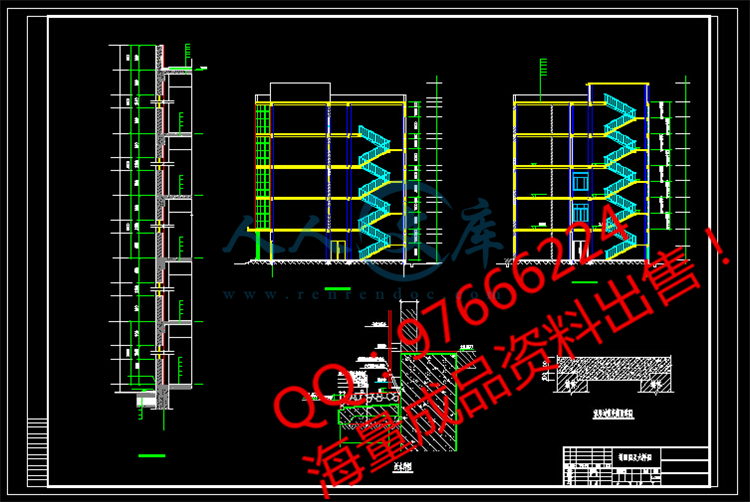摘 要
本工程为合肥工业大学附属中学教学楼,主要进行了建筑设计和结构设计中横向第5轴框架的设计。建筑平面布置采用内廊式。该建筑横向框架定为三跨,跨度轴线尺寸分别为6.9m、2.4m和6.9m。结构计算包括:楼盖的计算,采用弹性计算方法分别对单向板和双向板进行计算;楼梯采用板式楼梯,完成了梯段板、平台板和平台梁的设计;水平地震作用计算,首先进行层间荷载代表值的计算,接着采用D值法验算横向框架抗震变形以及采用底部剪力法计算横向水平地震作用力;竖向荷载作用下框架内力分析,首先计算出恒荷载和活荷载作用下的结构内力,接着进行内力组合,找出最不利的一组或几组内力,选取最安全的结果分别对梁和柱进行配筋。基础设计采用柱下独立基础,内柱采用了联合基础,进行了地基承载力验算和冲切验算,计算出了基础配筋。
这次毕业设计,培养了我们综合运用所学的基本理论和专业知识,提高了分析和研究解决结构设计等空间问题的能力,培养了我们建立理论联系实际,踏实,勤奋,认真,严格的科学作风,为毕业后尽快适应各项工作打下良好的基础。
关键词:教学楼 框架 结构设计
Abstract
This project is the teaching building of the middle school of Hefei University of Technology mainly has carried on in the architectural design and the structural design of thecrosswise 5th axis frame. the construction plane arrangementuses is the porch type. This building crosswise frame decides as threecross, the span spool thread size respectively is 6.9m, 2.4m and 6.9m. The structure computation includes: computation to the room and the ceiling, computation to the unidirectional board and the bidirectional board by using the elasticity computational method; The staircase uses the board style staircase,I has completed the design of the step board, the even platen and the platform Liang; The computation of horizontal earthquake function, first carrieson the level a load generation of computation,then uses the dvalue law crosswise frame earthquake resistance to distort aswell and to use the base shearing force law calculate crosswisehorizontal earthquake action; The frame endogenic force analysis under the vertical load function,first calculates the structure endogenic force under the permanentload and the live load function, then carries on the endogenic force combination, discovers most disadvantageous group of or several group of endogenicforces, selects the safest result separately to carry on to beam and column matches the steel reinforcing bar. The foundation design uses theindependent foundation under the column, the middle column has used the union foundation,the foundation has carried on the ground supporting capacity and the die cutting, calculatedthe foundation to match the steel reinforcing bar.
This graduation project, trained us to synthesize the elementarytheory and the specialized knowledge which the utilization studied,enhanced the analysis and space problem the and so on researchsolution structural design ability, trained us to establish applytheory to reality, steadfast, diligent, earnest, strict scientificattitude, adapted each work after the graduation to build the goodfoundation as soon as possible.
Key word:teaching building frames structural design







 川公网安备: 51019002004831号
川公网安备: 51019002004831号